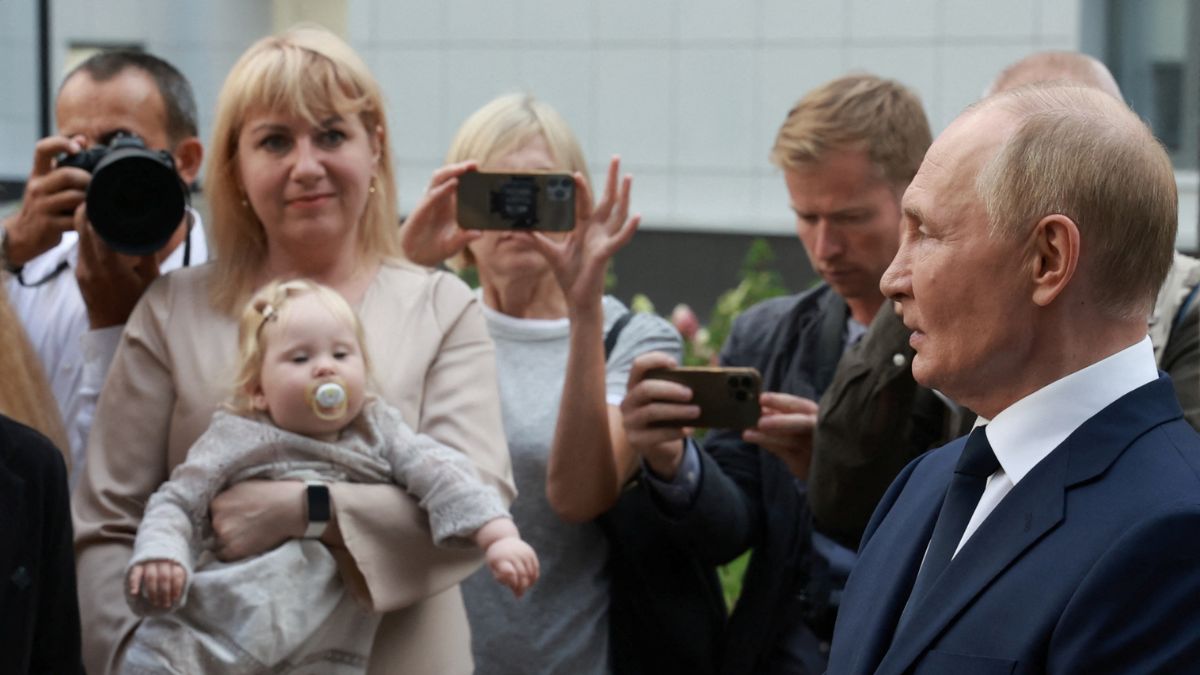Russia has launched a series of measures to counteract its severe demographic crisis.
These policies aim to incentivise childbirth among young women, particularly female college students, as the country struggles with a historic decline in population amid the ongoing war in Ukraine, emigration, and social challenges.
Russia in demographic crisis
Russia’s birth rate has plunged to a 25-year low , with only 599,600 children born in 2024, 16,000 fewer than the previous year. This marks the lowest figure since 1999.
The situation worsened in June 2024, when the monthly birth rate fell below 100,000 for the first time in recorded history. These trends have prompted warnings from experts, including the United Nations, which predicts that Russia’s population — currently at approximately 146 million — could drop to as low as 74 million by 2100 if the decline is not reversed.
The problem is exacerbated by the ongoing war in Ukraine , which has resulted in over 600,000 casualties and has driven more than a million young, educated Russians to flee the country. Kremlin spokesperson Dmitry Peskov described the situation as “catastrophic for the future of the nation” in July 2024.
Financial incentives for young mothers
To combat the crisis, Russia is offering financial rewards to young women who choose to have children.
These incentives include both regional and federal programmes:
Regional payments: Starting January 1, 2025, nearly a dozen regional governments will offer payments of 100,000 rubles (approximately $910) to female college students under 25 who give birth to healthy babies.
For example, in Karelia and Tomsk, eligible women must be full-time students and local residents. However, payments are forfeited if the baby is stillborn.
Federal maternity benefits: The national government has also increased its maternity payments.
First-time mothers can now receive 677,000 rubles ($6,150) in 2025, up from 630,400 rubles the previous year. Mothers of a second child are eligible for 894,000 rubles ($8,130), an increase from 833,000 rubles in 2024.
Governor Gleb Nikitin of the Nizhny Novgorod Oblast has further incentivised childbirth with a unique policy offering one million rubles (approximately $10,000) per child, starting in 2025. The programme’s details remain unclear but represent one of the most significant efforts at the regional level.
Support for families extended
Beyond financial payments, Russia has implemented a wide range of policies aimed at fostering a “pro-family culture”:
Restricting abortions: The government has introduced tighter regulations on abortion access to encourage women to carry pregnancies to term.
Promoting family-centric media: The portrayal of family life has shifted in Russian media. A reality show once titled ‘1__6 and Pregnant’, which warned against teen pregnancies, has been rebranded as ‘Mom at 16’ to “celebrate” young motherhood.
Banning “child-free” propaganda: In November 2024, the State Duma voted to prohibit content promoting “child-free” lifestyles or non-traditional family structures. This includes any material deemed to support same-sex relationships or challenge conventional gender roles. Violators face heavy fines.
Encouraging procreation at work: Regional health ministers have suggested unconventional approaches, such as encouraging women to “engage in procreation on breaks” at work. Health Minister Yevgeny Shestopalov stated on Russian TV, “Life flies by too quickly. Being busy at work is not a valid excuse.”
Wedding night incentives: Some regions have proposed funding newlywed hotel stays to increase the likelihood of conception.
The long-term plan & criticism
The Russian government’s “Strategy of Action for Family and Demographic Policy” outlines a two-phase approach aimed at reversing the demographic decline by 2036:
Phase 1 (2025-2030): Increase the birth rate to 1.6 children per woman and reduce infant mortality rates.
Phase 2 (2031-2036): Raise the birth rate further to 1.8 children per woman while extending life expectancy.
Valentina Matvienko, chairwoman of the Federation Council, has been nominated to lead these efforts. The strategy is aimed at highlighting traditional family values and aims to strengthen the institution of marriage as a union between a man and a woman.
Russia’s demographic policies come against a backdrop of global fertility declines. Many countries, including Japan, China, and Canada, face similar challenges. For example, Canada’s fertility rate dropped to 1.26 children per woman in 2023, its lowest level ever.
However, Russia’s approach — marked by financial incentives and restrictive social policies — has drawn mixed reactions. Critics argue that encouraging childbirth through cash payments ignores broader systemic issues, such as economic instability, lack of infrastructure, and societal pressures on women.
Moreover, the ongoing war in Ukraine continues to strain Russia’s resources and population. Analysts suggest that reducing casualties and fostering a more stable environment may be more effective in addressing the country’s demographic challenges.
Also Watch:
With inputs from agencies
)